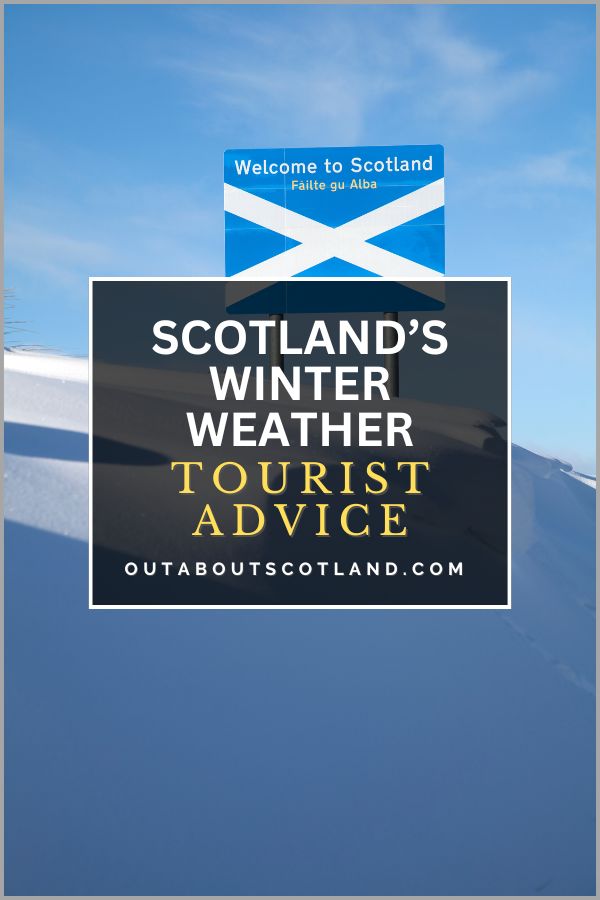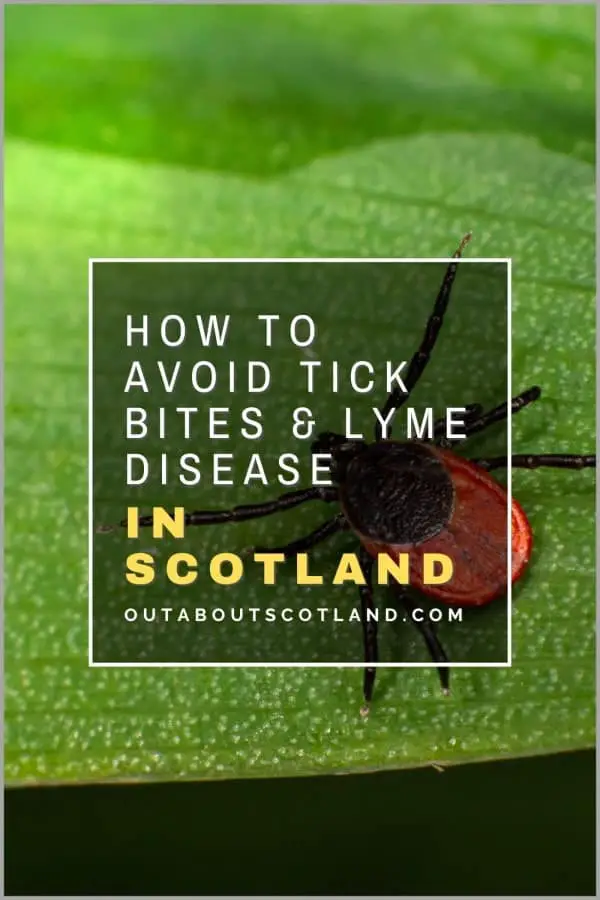Scotland is a world-class tourist destination thanks to its beautiful scenery, exciting cities and fascinating history, but what isn’t so popular is its frequently dismal winter weather. It’s often said that a holiday in Scotland will let you experience all four seasons in one day, and to be honest, that’s pretty much spot-on.
While Scotland enjoys good weather in the summer months with an average of 17 hours of daylight and an average temperature of 19 °C, the winter months are a completely different beast. Between November and February, the temperature rarely rises above 6 °C and the amount of daylight drops to a rather miserable 6-7 hours per day.
But that doesn’t mean Scotland should be avoided outside of the summer months, and if you can cope with a few wintry showers you’ll soon find that our winters provide some of the best holiday experiences in Europe.
Winter Weather in Scotland

Talking about the weather is a national pastime here in Scotland, mainly because it’s so changeable no one knows what it’s going to do from one day to the next. You’re not going to get blazing sunshine every day, but despite what you might have heard, Scotland has quite a temperate climate, even in winter.
January and February are generally the coldest months of the year, but even so, you’ll find average daytime temperatures frequently sit in the 5 to 7 °C range in the Lowlands. Something to bear in mind is that you’re much more likely to get freezing conditions in the north of the country, and most of the Highlands will have a blanket of snow at higher altitudes from November to March.
Protect Your Family From Scotland's Biting Midges
- Powerful, reliable protection for up to 8 hours
- Water- and sweat resistant
- Repels midges, mosquitoes, horse flies, sand flies, fleas and ticks
- Safe for use on adults, children over 30 months and pregnant women
- Non-sticky, moisturising with a pleasant fragrance
- Packaging may vary
The Dangers of Scotland’s Winter Weather
While Scotland’s weather doesn’t differ dramatically from other countries at this latitude, it might come as a shock to the system if you’re used to a warmer climate. In general, the weather here is similar to England although it’s usually a couple of degrees cooler because we’re further north.
Scotland differs greatly in the Highlands, though, which has weather conditions that can dramatically change in minutes, and many a hiker has set out in blazing sunshine in the morning only to find themselves stuck in driving snow in the afternoon.
With so many winter sports venues attracting tourists from far and wide, it’s no surprise that the Scottish Mountain Rescue Service is one of the busiest in Europe. Just take a look at the statistics:
- There were a total of 906 call-outs to the Scottish Mountain Rescue service in 2022.
- Of these incidents, 740 people were rescued.
- Bad weather is a critical factor in winter weather incidents, especially in the western Highlands where around 3,000 mm of rain falls each year.
- In the Cairngorms, you can expect snowfall for more than 100 days each year and the average winter temperature is 0 °C without considering wind chill, which can drop temperatures considerably.
Note: To calculate wind chill, multiply the wind speed by 0.7 and subtract that value from the air temperature. For example, if the temperature is 5 °C and the wind speed is 10 mph then 5 – (10 x 0.7) gives you a wind chill temperature of -2 °C.
Winter Temperatures
One thing to be aware of is that on average, the west coast gets more rain than the east coast, as you can see in the table below (compare Glasgow’s November rainfall to Edinburgh).
| Location | Max temp. °C | Min temp. °C | Sunshine hours | Rainfall mm | Rainy days |
|---|---|---|---|---|---|
| Edinburgh Nov | 10 | 4 | 70 | 63 | 12 |
| Edinburgh Feb | 8 | 2 | 80 | 42 | 10 |
| Glasgow Nov | 7 | 3 | 50 | 106 | 18 |
| Glasgow Feb | 5 | 2 | 63 | 64 | 16 |
| Aberdeen Nov | 7 | 3 | 60 | 98 | 14 |
| Aberdeen Feb | 6 | 2 | 72 | 52 | 11 |
| Inverness Nov | 7 | 3 | 60 | 99 | 14 |
| Inverness Feb | 6 | 0 | 75 | 53 | 11 |
Winter Daylight Hours
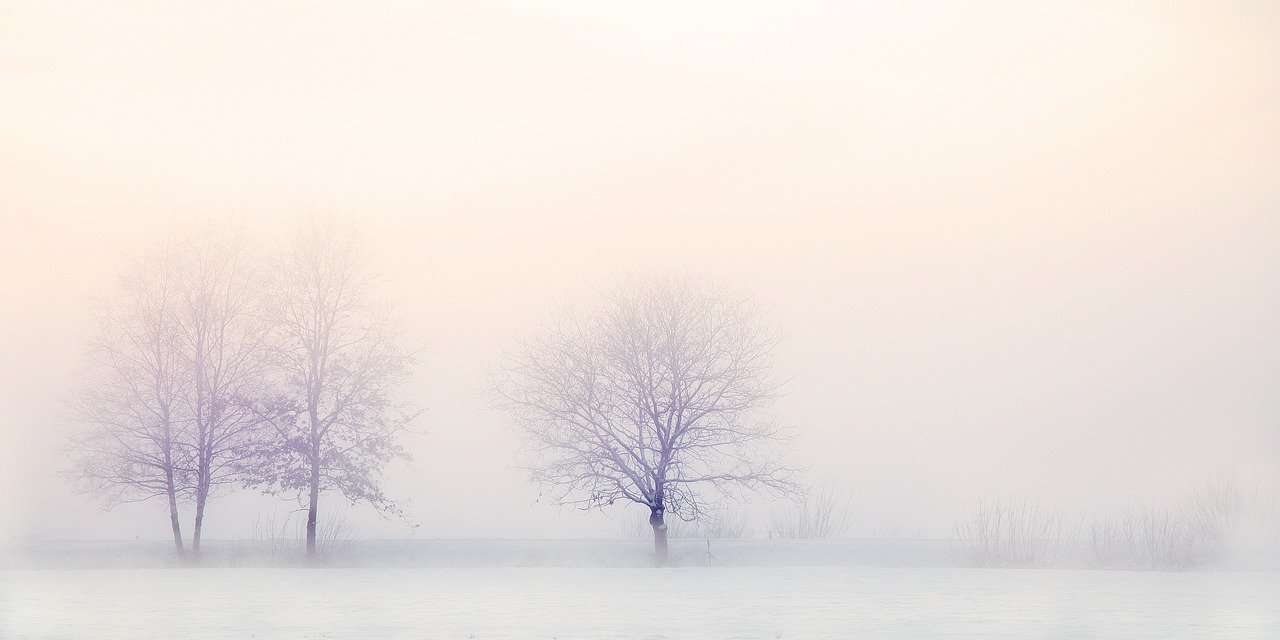
If you’re travelling from a southerly latitude, Scotland’s daylight hours are probably lower than you’re used to because we’re situated quite far north. As a comparison, Inverness – a city in the Highlands – is 3,971.26 miles (6,391.13 km) north of the equator compared to Barcelona which is 2,859.63 miles (4,602.13 km).
That means in the depths of winter we get an average of just 7 hours of light in Scotland, with full daylight only showing itself from around 8.30 am to 3.30 pm. Those times are for the capital city of Edinburgh which lies in the southern region of the country, but if you head to the far north in the Shetland Islands you’ll find the daylight hours decrease to a mere six hours.
The moral of the story is to start your day early but be prepared to come back early too, unless you’re in a city where most attractions stay open till the evening.
| City | Daylight Hours 01 December | Sunrise | Sunset |
|---|---|---|---|
| Glasgow | 7:26 hours | 08:22 | 15:48 |
| Stirling | 7:23 hours | 08:22 | 15:46 |
| Perth | 7:20 hours | 08:22 | 15:42 |
| Aberdeen | 7:10 hours | 08:21 | 15:32 |
| Inverness | 7:06 hours | 08:32 | 15:38 |
Book Tours in Scotland
Snow in Scotland
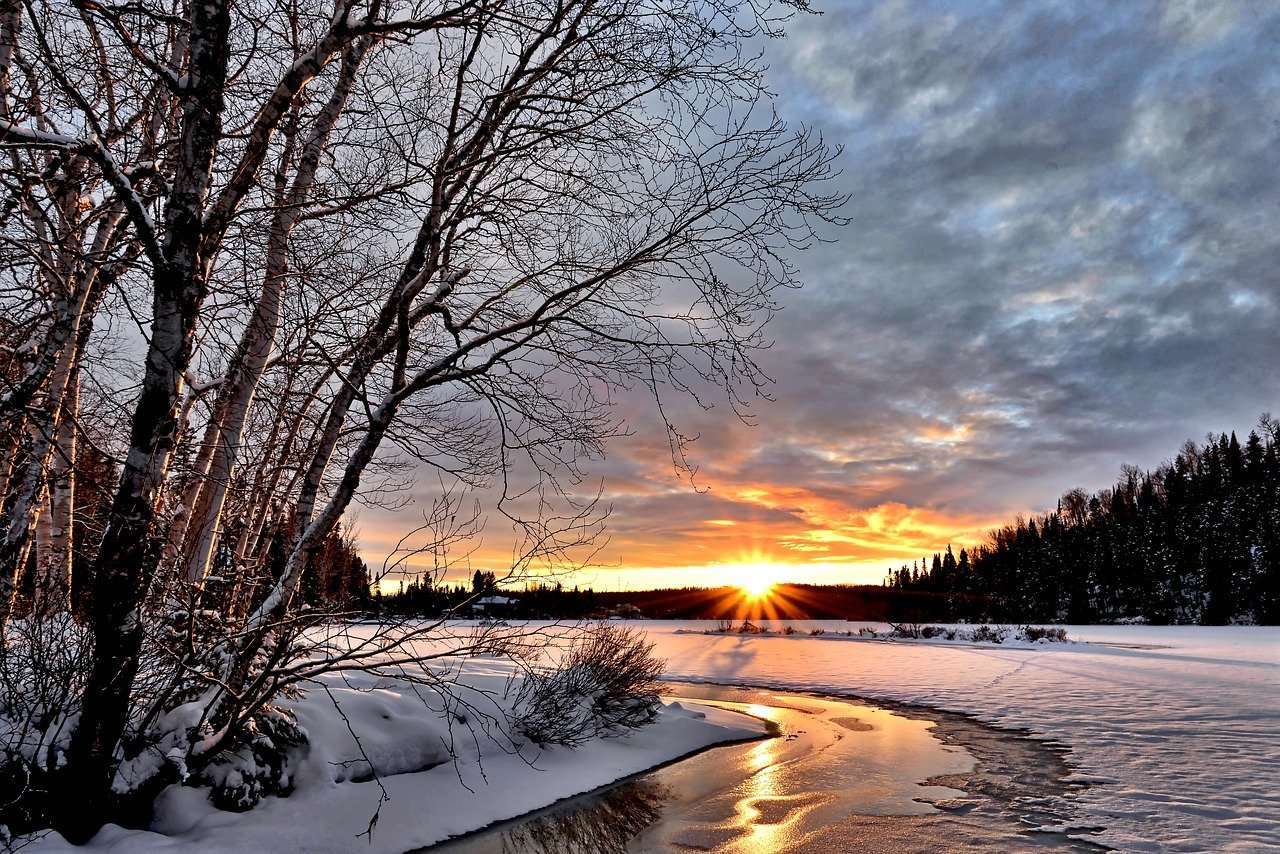
With regard to snow, it depends on which part of the country you’re visiting, but if you intend to get active on the white stuff you can be reasonably confident you’ll find a good amount of snow wherever you are if you head into the Highlands. If you’re coming to Scotland for snow sports you’ll definitely want to head to the Highlands as there are, on average, 100 days of snowfall each year, and due to the elevation, the snow usually lasts until April.
The Lowlands meanwhile, don’t experience anywhere near as much snow and you’ll generally find 2-3 weeks of snowfall each year, with the highest likelihood of it falling in February and occasionally in January or March.
My recommendation is to visit the Nevis Range – and Ben Nevis in particular – which is situated close to the town of Fort William. If you visit this mountain region, head to the Nevis Range Mountain Experience as the summit offers near-guaranteed snowfall for ski and snowboard enthusiasts.
Other top skiing destinations are:
- Cairngorm Mountain: Cairngorm Ski Area, Aviemore, PH22 1RB
- The Lecht: Strathdon, Aberdeenshire, AB36 8YP
- Glenshee Snowsports Centre: Cairnwell, Braemar, Aberdeenshire AB35 5XU
Although it’s impossible to accurately predict the weather all the time, online weather reports are pretty good as almost all of them use the same data. One of the best websites for finding details of Scotland’s weather in the main skiing areas is SnowForecast.com.
Winter Clothing

Scotland’s winter weather can change at the drop of a hat and there are fatalities every year caused by people venturing into the Highlands unprepared. However, it’s easy to keep yourself safe by using a little common sense – as you’ll find in the tips below.
1: If you’re setting out on a hike in the Highlands make sure you take a backpack with you (Amazon link) and pack some additional lightweight clothes in the bottom. Include thermal baselayers (Amazon link) and keep an insulated top in your bag as well as a hat and gloves. Make sure you keep your extremities warm because your body will shut those parts down first to keep your essential organs working.
2: Even if the weather looks ok when setting out on a hike I always throw a pac-a-mac (Amazon link) in my bag. I’ve lost count of the number of times it has protected me from an unforeseen soaking.
3: Keep your head warm. You’d be amazed at the amount of heat you lose through the top of your head. I keep a Thinsulate hat (Amazon link) in my pocket at all times as well as a pair of gloves. They don’t take up much space and they’re worth their weight in gold when the weather turns.
4: Wear sturdy hiking boots (Amazon link to Berghaus boots, which I swear by) and DO NOT set off up a mountain in a pair of trainers. I see this all the time but I can never understand why people wear inappropriate footwear for a hike in winter. I own two pairs of boots, a heavy-duty pair for winter and a lightweight pair for summer. See my guide to the Best Waterproof Hiking Boots for more advice.
5: Take a portable power pack (Amazon link) with you. A mobile phone offers more than mountain-top Instagram selfies as it can become a genuine lifesaver if you need to call the rescue services. Protect your phone in a waterproof bag (Amazon link) and charge your power pack before you leave home so you know that whatever happens, you’ll be able to make a call (as long as there’s a signal of course).
Protect Your Family From Scotland's Biting Midges
- Powerful, reliable protection for up to 8 hours
- Water- and sweat resistant
- Repels midges, mosquitoes, horse flies, sand flies, fleas and ticks
- Safe for use on adults, children over 30 months and pregnant women
- Non-sticky, moisturising with a pleasant fragrance
- Packaging may vary
Touring Scotland in Winter
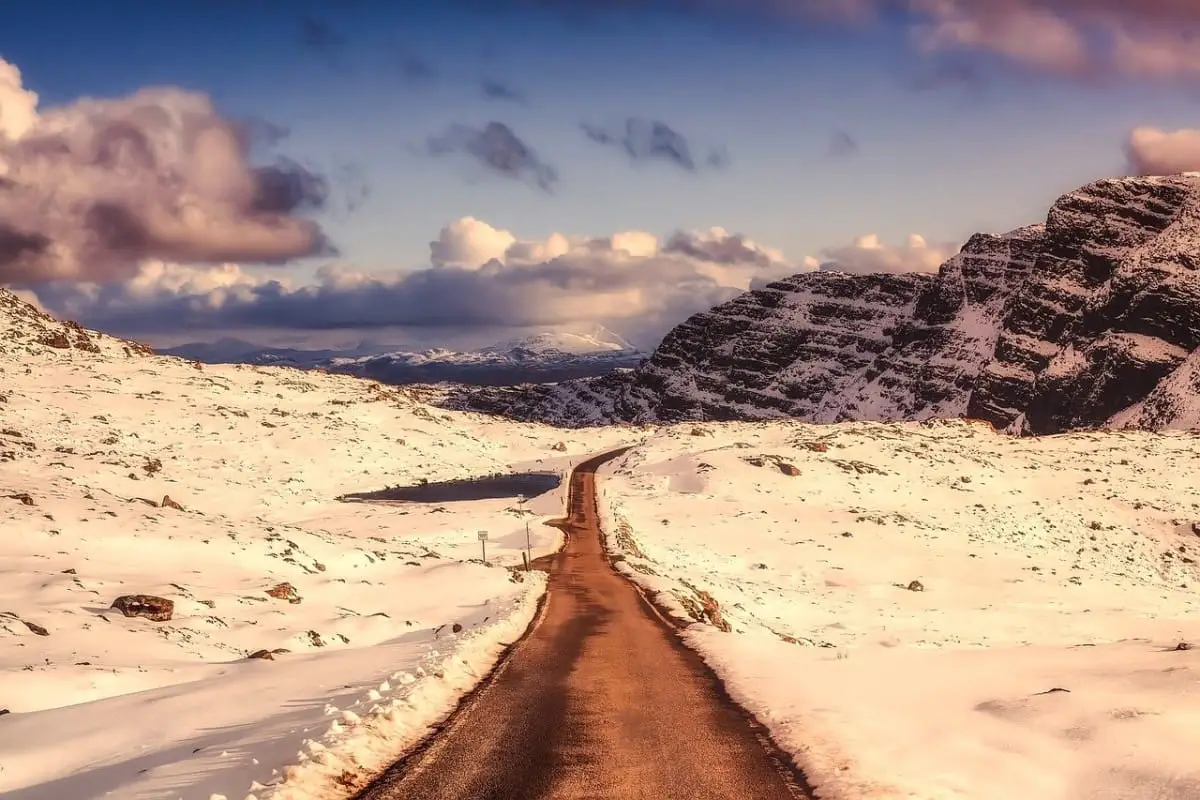
Winter weather in Scotland is often mild in the Lowlands but you can expect extreme conditions in the Highlands which inevitably leads to road closures, train cancellations, and flight delays.
Thankfully though, it’s possible to travel even when an unexpected blizzard hits, as Scotland’s infrastructure means roads and rail tracks get cleared quickly and there are enough airports that flights can get diverted easily (see my guide to Main Airports in Scotland for a rundown of travelling by air).
That being said, I suggest taking a car if you want to explore the more remote areas of Scotland as you’ll be unaffected by public transport delays and you’ll be able to stop and explore the beautiful landscapes at your own pace.
Here’s an important tip for visitors who aren’t used to driving in heavy snow – when you’re in remote, high-ground areas, take a look at either side of the road where you’ll see tall posts embedded in the ground every few metres. These indicate where the road is, so if you’re ever in a situation where you can’t see the tarmac, these posts will keep you on the right track. They also indicate how deep the snow is which is very useful on roads with hidden dips.
Another top tip is to check the road conditions and weather forecast before you set out on your journey. I always use the Traffic Scotland website as they have the most up-to-date live traffic information and road closure alerts.
Winter Driving in Scotland

Scotland comes alive in winter and I honestly don’t think there’s anything more breathtaking than seeing a vast snow-capped mountain on a crisp, clear day. It’s a truly spectacular experience, especially if you’re somewhere like Glencoe.
Unfortunately, all that gob-smacking gorgeousness comes at a cost for drivers because our roads are potentially quite dangerous after a snowfall, especially if you’ve come from a hot climate and you’re not used to freezing conditions.
There are a few points to note about our roads that you must understand before you head off on a winter road trip. First off, our roads are constantly subjected to extremes of weather with heavy downpours soaking the surface and freezing temperatures turning the water into slippery ice. This has two serious consequences:
1: In winter, you’ll frequently find a recent covering of snow hiding a sheet of ice underneath, which is a combination that can become lethal if you don’t take care and slow down.
2: The constant expansion and contraction of ice leads to the British driver’s biggest nightmare (apart from speed cameras). Potholes.
Wide, deep, and sudden potholes can throw your car off course without warning. While the roads are repaired fairly regularly, it’s unavoidable that these potholes will appear without warning, so keep an eye open for them at all times.
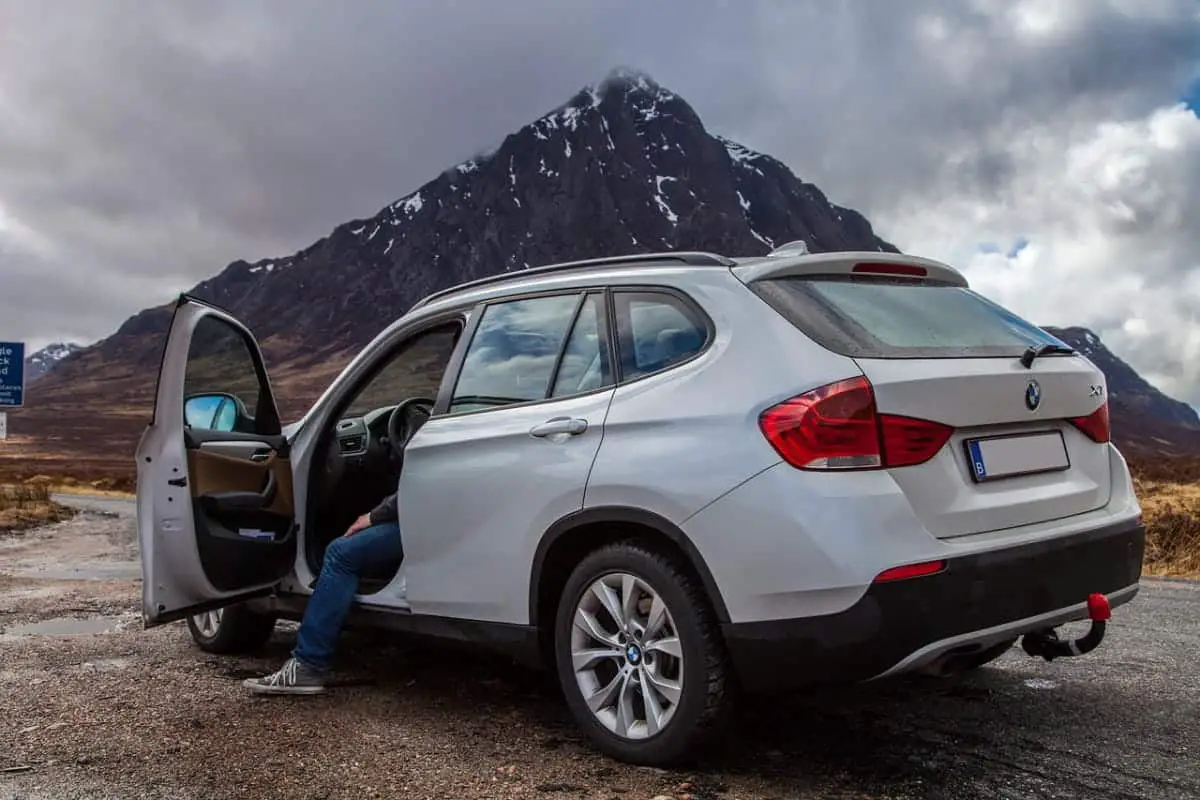
Winter Driving Tips
- If enough snow falls off your car while driving, you can be liable for driving without due consideration. It’s also illegal to drive with a windscreen that’s obscured by mist or ice, and if caught by the police, you could land yourself a £60 fine and three points on your licence as a minimum.
- Following on from the above, it’s UK law that all lights are visible, and the same goes for the front and rear number plate lights.
- Don’t expect to have a mobile phone signal everywhere you go in the Highlands. This is something that could be catastrophic if you have a breakdown in winter and there’s no passing traffic.
- Note that private recovery services such as local garages will routinely charge upwards of £200 for a single call out.
- Drivers are expected to prepare for winter driving in Scotland by packing an emergency kit (Amazon link) which includes a spade, warning triangle, torch, and a medical kit as a minimum.
- Snow tyres and snow chains are not suitable for driving on clear roads where there’s no snow as they can damage the road. If the police see a vehicle with chains or studs on a clear road, they’ll almost certainly pull it over.
If you’d rather not drive in Scotland in winter you can still experience many of the best attractions by booking yourself onto a guided tour such as Rabbie’s Small Group Tours. This company specializes in minibus tours and they head to all of the main tourist destinations in Scotland.
Book Tours in Scotland
Frequently Asked Questions
How cold does it get in Scotland in winter?
In Scotland, the average winter temperature ranges from 0°C (32°F) to 5°C (41°F). However, in the Highlands and mountainous areas, it can drop well below freezing and snowfall is common which is why it’s always a good idea to check the weather forecast before heading outdoors.
Where is the coldest place in Scotland?
The coldest place in Scotland can often be the Cairngorms, a mountain range in the Eastern Highlands. The weather station at Braemar in the Cairngorms frequently records the country’s coldest temperatures and has seen -27 °C (-16.6 °F) in the past.
How much does it snow in the Scottish Highlands?
The amount of snowfall in the Scottish Highlands can vary greatly depending on the year and the specific location. On average, the Highlands receive about 100 days of falling snow per year, mostly between November and March. The high peaks and mountain ranges can get significantly more, with snow often remaining on the highest peaks well into the summer.
Where are the best places for skiing in Scotland?
Scotland offers several great locations for skiing. Here are a few you might want to consider:
Glenshee Ski Centre: This is the largest ski resort in Scotland, offering 40 km of piste over 4 mountains.
Nevis Range: Located near Fort William, it offers skiing up to 1,190 meters and a gondola that takes you up Aonach Mor.
Cairngorm Mountain: Located in the heart of the Scottish Highlands, it has a reputation for challenging slopes.
The Lecht: This is a great place for beginners and families. You’ll find it in the Eastern Cairngorms.
Glencoe Mountain Resort: Known for having the steepest ski run in Britain, it offers a range of runs for all skill levels.



